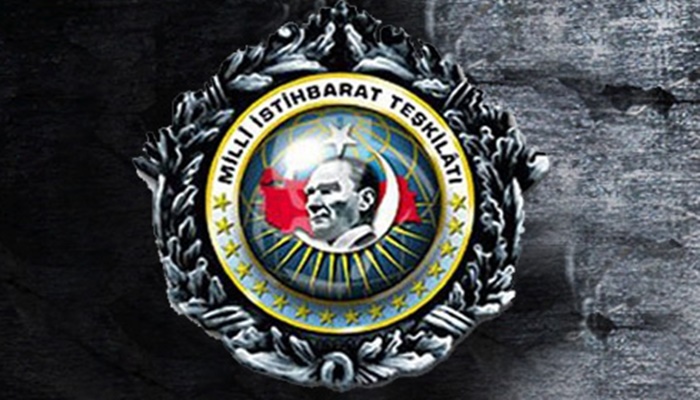by Abdullah Bozkurt
An Iranian mole in Turkey’s spy agency, the National Intelligence Organization (MIT), blew the cover of a secret Turkish intelligence asset who had discreetly been meeting with his handler attached to the Turkish consulate in Urmia.

The incident was never reported and was conveniently covered up by MIT even though Turkish police investigators who were probing a secret espionage network run by the Iranian Revolutionary Guards Corps (IRGC, Sepah for short in Persian) in Turkey happened to stumble upon this when a whistleblower came forward. The document, included in a secret investigation file on Iran’s espionage activities in Turkey, reveals the tip was provided by an Iranian of Azeri Turk origin named Hassan Faraji Ghotlou, who was assigned as an operative to Turkey by Iran.
Ghotlou, who said he had grown frustrated with working for the IRGC under the growing shadow cast on employees of Azeri origin in the secretive Sepah, decided to spill the beans on covert Iranian operations when he came to Turkey for an assignment in July 2013. Among the information revealed by Ghotlou, a 37-year old Urmia resident, was crucial information on how the IRGC was alerted about a mole working for Turkish intelligence. According to this account, a Turkish intelligence operative (whose name was withheld for reasons of security) attached to the consulate in Urmia developed an asset identified as Nadir Mohammed, who was working for the IRGC.
As the Turkish intelligence officer was secretly meeting with Nadir and collecting information from him, the IRGC leadership was alerted to this leak by an unidentified mole who was working for Iran in the headquarters of Turkish intelligence, MIT. Ghotlou said after the information was received from the Iranian mole in MIT, his superiors assigned him the task of conducting surveillance on the Turkish officer working out of the consulate. He said in his statement that he followed this man for 20 days, recording his every move and who he met with, when and where. He described the Turkish operative as a sporting man around the age of 35 to 40 and 1.70/1.75 meters tall. The Turkish operative and his Iranian asset Nadir were meeting in a gym, among other places.
Ghotlou said he did not know the identity of the Iranian mole in Turkish intelligence but stated that he learned about another mole, a Turkish military officer, who was leaking information to Iran from his post at Incirlik Airbase in the southeastern province of Adana. The officer was apparently another asset developed by the IRGC to collect information on the Turkish army as well as NATO forces that were deployed at this critical air base. He said he did not know the identity of this officer but emphasized that there were many Turks working for the IRGC in Turkey.
Ghotlou’s detailed account on how many times he came to Turkey, by which routes and what hotels he stayed in while on various assignments were later independently verified by the police who investigated the details of his statement to make sure he was legitimate. Therefore, outing Turkish assets in Iran did not sound far-fetched to investigators. He also shared another interesting detail on an exposed Iranian spy ring in 2011 in the border province of Iğdır where Iranian operative Shahram Zargham Khoei and his associates were arrested and later convicted. Ghotlou said he recognized some of these people from published photos and testified that they worked for the IRGC. He claimed his friend Esedullah Nebizad in the IRGC had been working on this file.
Khoei was arrested on Aug. 19, 2011 as part of the investigation into an Iranian spy ring on the Turkish-Iranian border. When the police arrested him, his colleague and several Turkish suspects, they were found to be in possession of arms, secret correspondence between the suspects and Iranian intelligence officials and digital recorders containing information on sensitive targets such as military posts and troops that were classified as state security. Interestingly enough then-Prime Minister and current President Recep Tayyip Erdogan helped secure the release of convicted Iranian spy Khoei, who was sentenced to 15 years for espionage by the Erzurum 2nd High Criminal Court. When in 2014 his government pushed the hastily arranged amendment to the intelligence law that authorized MIT to hand over convicts and detainees to other countries and terrorist organizations without a judicial review, the first thing MIT did was to release this spy to Iranian authorities.
These scandalous revelations are hardly surprising given the fact that Erdogan appointed Hakan Fidan, a pro-Iranian figure who had been nurtured in Shiite study circles thanks to Iranian intelligence to lead the spy agency in 2010. He is the real mole in Turkish intelligence, and the confidential Tevhid Selam investigation exposed how he was secretly meeting with IRGC operatives in Turkey and leaking the confidential minutes of Cabinet meetings. No wonder the Turkish government blew the cover of several Iranian intelligence assets who had secretly been meeting with Mossad handlers in Turkey in early 2012. Ankara disclosed to Tehran’s intelligence organization the identities of “up to 10 Iranians who had been meeting inside Turkey with their Mossad case officers,” The Washington Post’s columnist David Ignatius wrote on October 16, 2013.
All this suggests a pattern in which the Turkish intelligence agency is truly compromised and deeply infiltrated by Iranian IRGC assets. Erdogan has empowered MIT with extraordinary powers with almost complete immunity so that it can expand clandestine schemes in parallel to what we see in Iran. As a result, MIT is no longer a reliable, friendly and allied intelligence agency but rather a hostile secret service that is bent on plotting, scheming and stirring up disturbances at home and abroad, threatening Turkey’s ally and partner nations.



